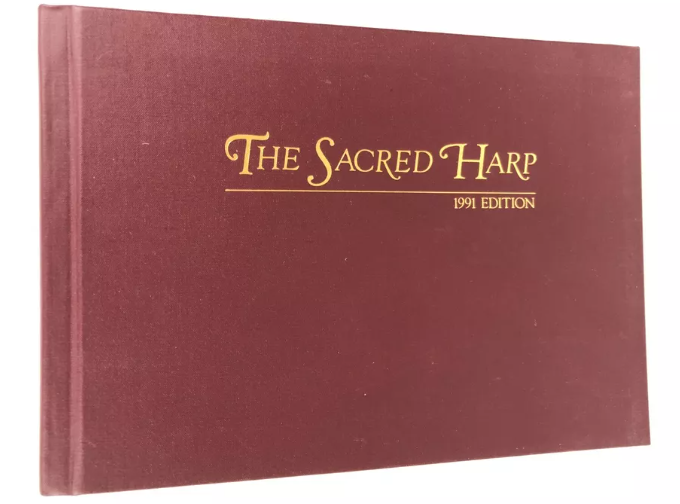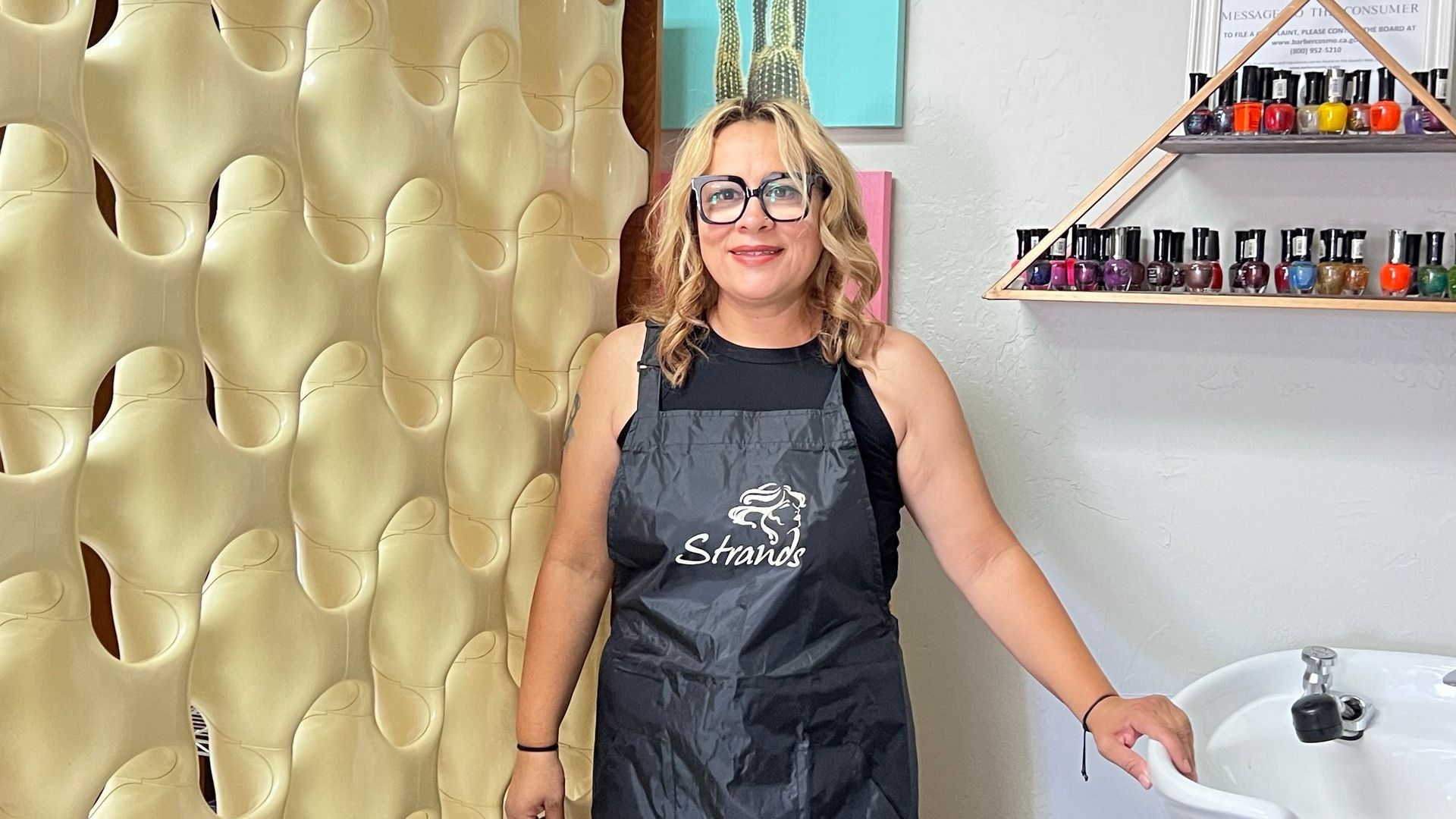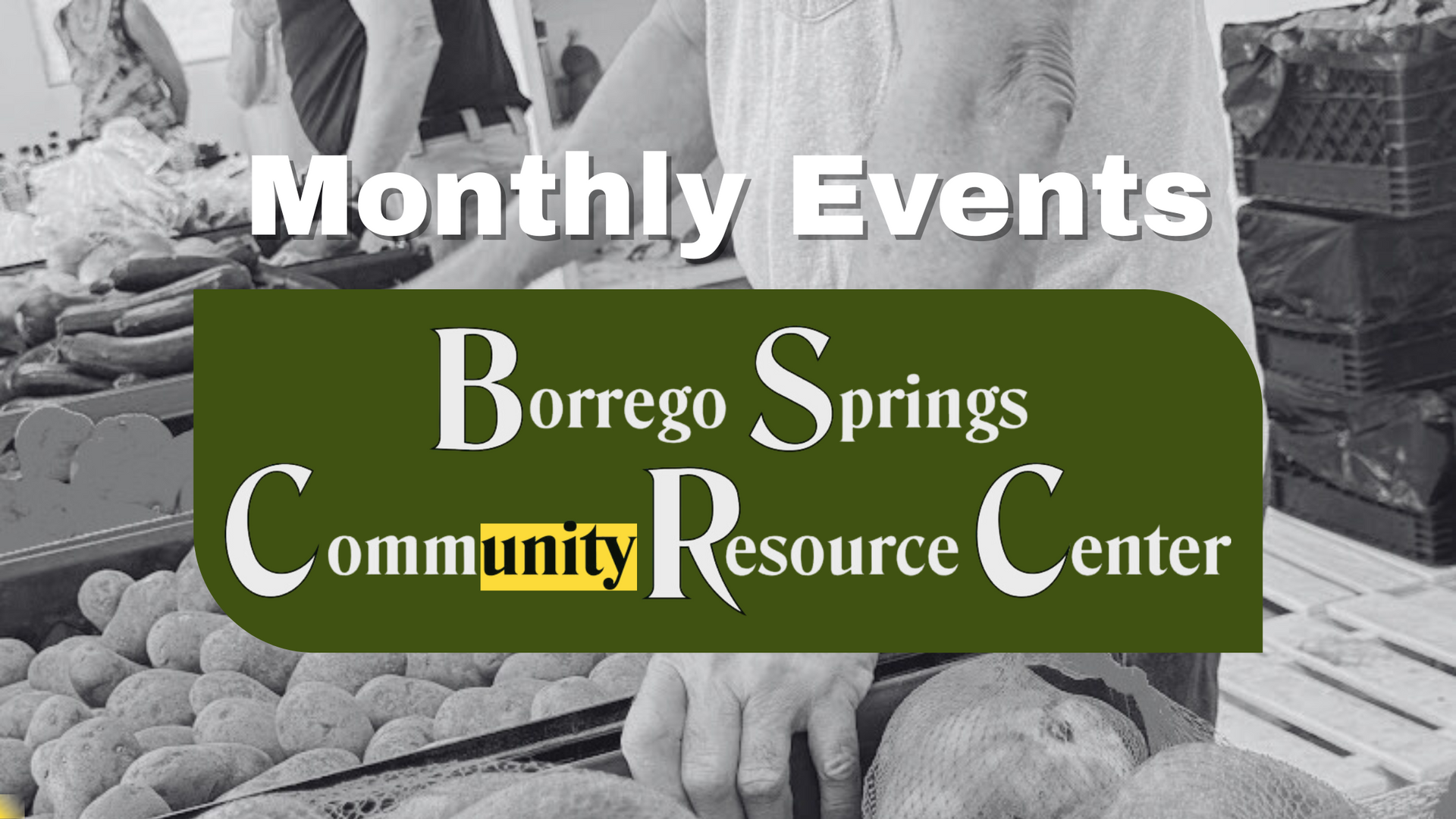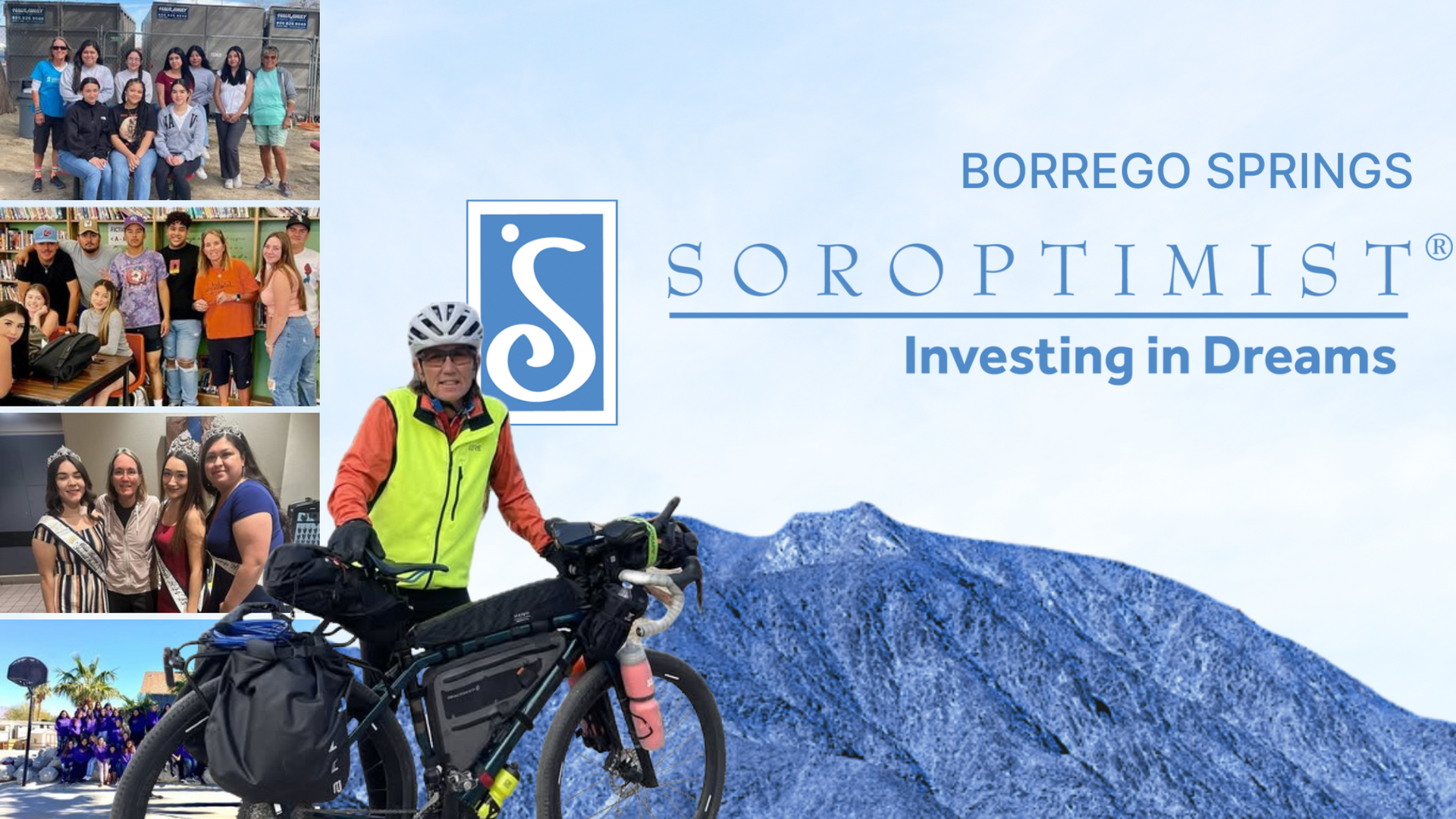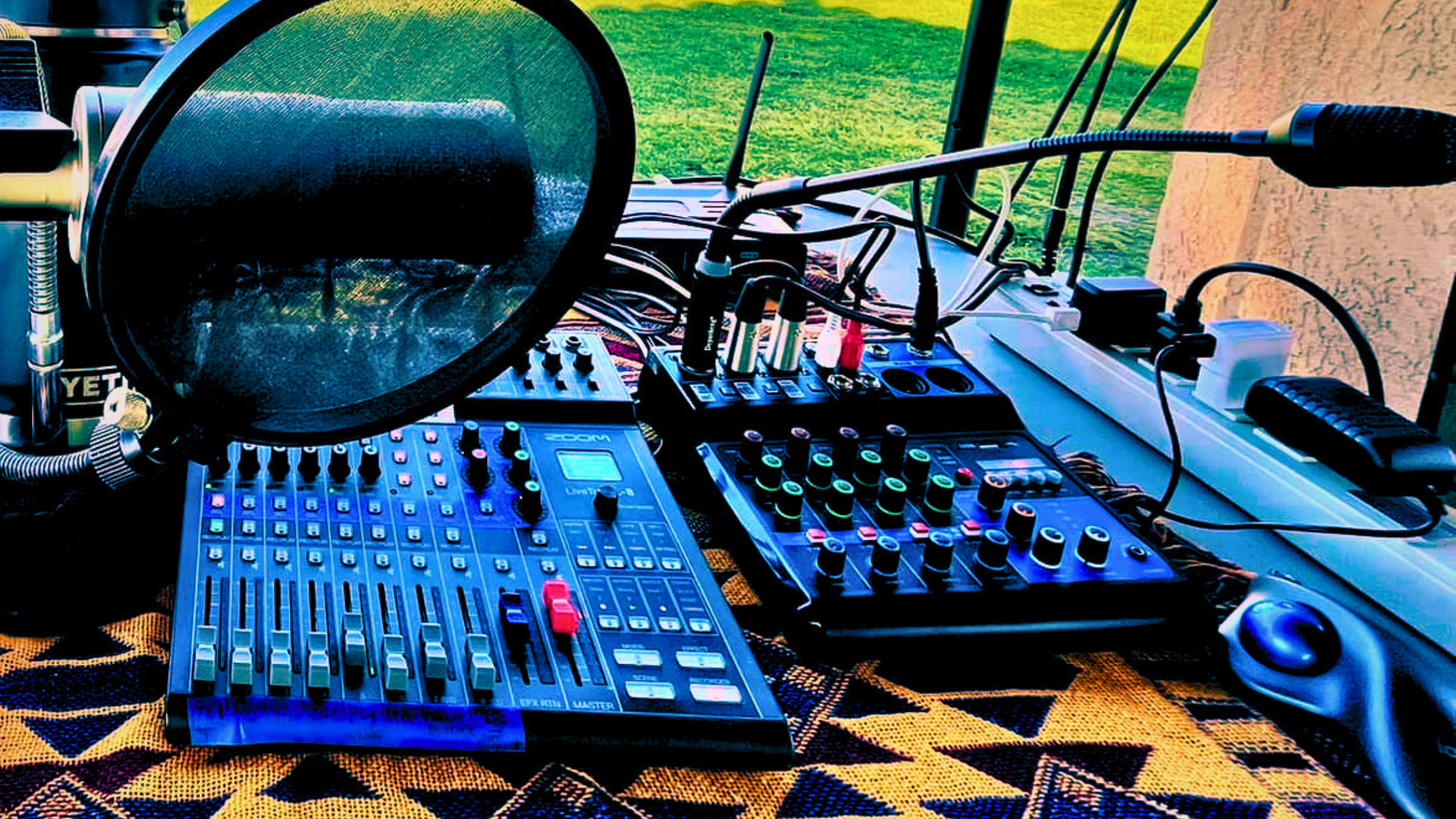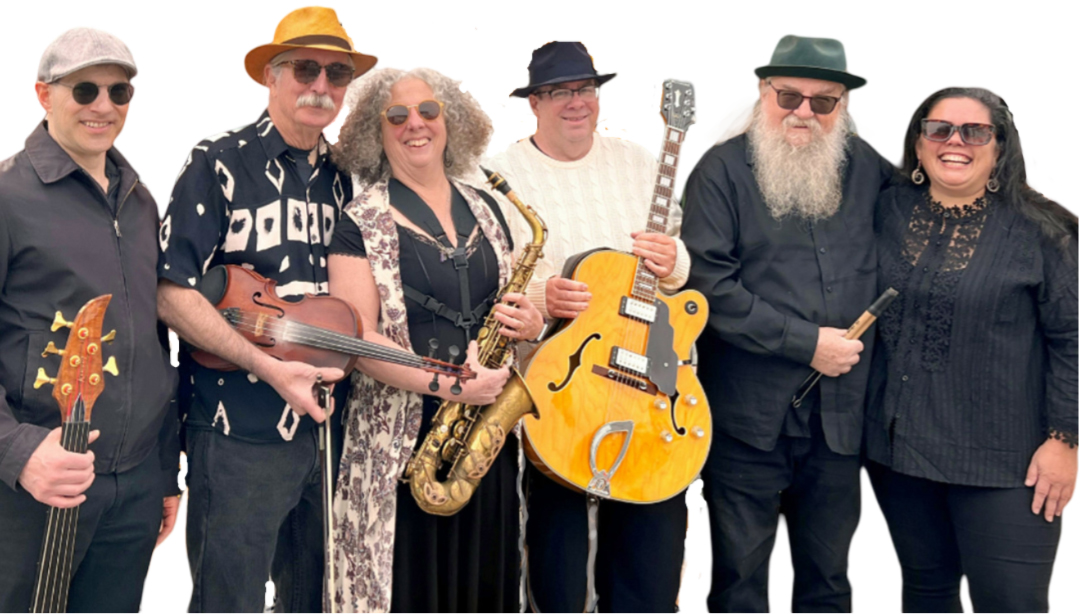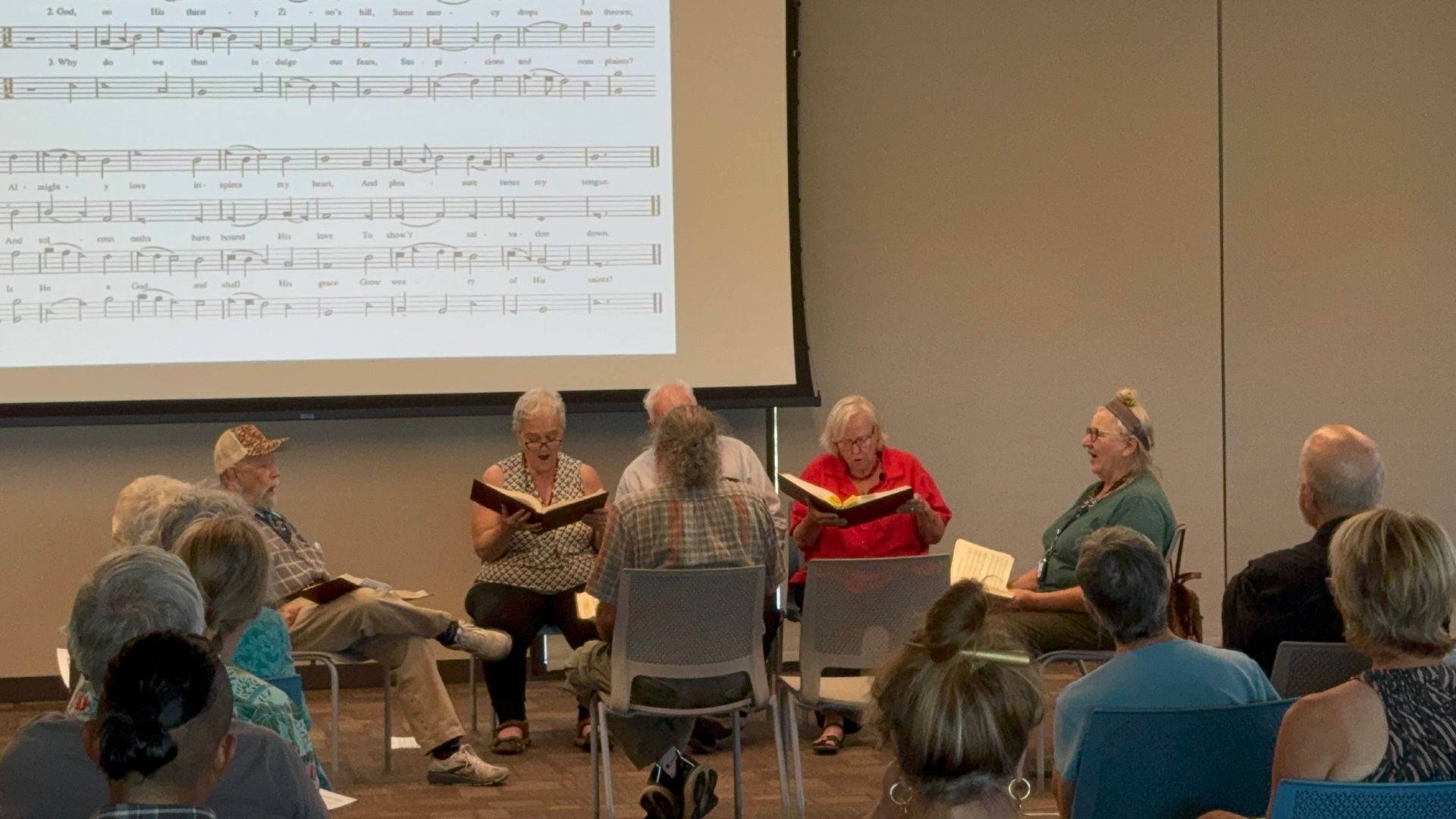
Shape Note Event Filled The Library!
On Wednesday, March 26, 2025, the Borrego Springs Library hosted the San Diego Fasola Singers for a public Shape Note singing session. The event was led by Jeanne Plekon, with support from the San Diego Fasola crew and local participants including Beth Hart, Naomi Madsen and more. Attendance exceeded planned seating, and additional chairs were brought out to accommodate the audience.

What Is Shape Note Singing?
Shape Note singing, also known as Sacred Harp, is a four-part, a capella musical tradition that uses note shapes—triangle (Fa), circle (Sol), square (La), and diamond (Mi)—to help singers read and pitch notes. It was developed in New England during the 18th century and spread south through the Appalachian Mountains. Today, Shape Note singing continues in the U.S. and abroad, including in Ireland, France, Germany, Poland, Norway, and Sweden.
Format and Participation
As Jeanne Plekon explained during the session, “This form of singing is centered around a hollow square, with each side representing a different vocal part—treble, alto, tenor, and bass. The leader stands in the middle, and that role rotates after each song.”
Leaders choose the song, set the tempo, and can defer to the front row to find the right starting pitch. Jeanne noted that although songs are written in a specific key, the group can adjust it so that all voices are in a comfortable range: “That’s negotiable,” she said. “You slide it up or down until it works.”
Tempo is typically kept simple using either a two-beat (down-up) or three-beat (out-down-up) conducting motion. There is no formal training required, and everyone is encouraged to participate.

Notation and Practice
According to Jeanne, learning to follow the music requires a unique visual skill: “One eye stays on your line of music, and the other eye looks down at the words. You develop what I call ‘chameleon eyes.’”
Repeats and multiple endings are marked in the music, but the group decides how to handle them during the session. For example, Jeanne mentioned that while a song may call for a repeat after the first verse, singers might decide to repeat the last verse instead. Flexibility and group decision-making are part of the tradition.
The process usually begins with singing the shaped notes (Fa, Sol, La, Mi) before moving to the lyrics. “It’s okay to make mistakes,” Jeanne added. “If you get lost, just go ‘la, la, la’ and jump back in.”
Interested in a Future Event?
If you'd like to see another Shape Note session in Borrego Springs, reach out to Jeanne Plekon to express your interest in bringing the San Diego Fasola Singers back to the library.
Interested in Learning More?
Participants who want to explore Shape Note singing further can purchase The Sacred Harp songbook from
originalsacredharp.com. The book is widely considered the foundational resource for this musical tradition.
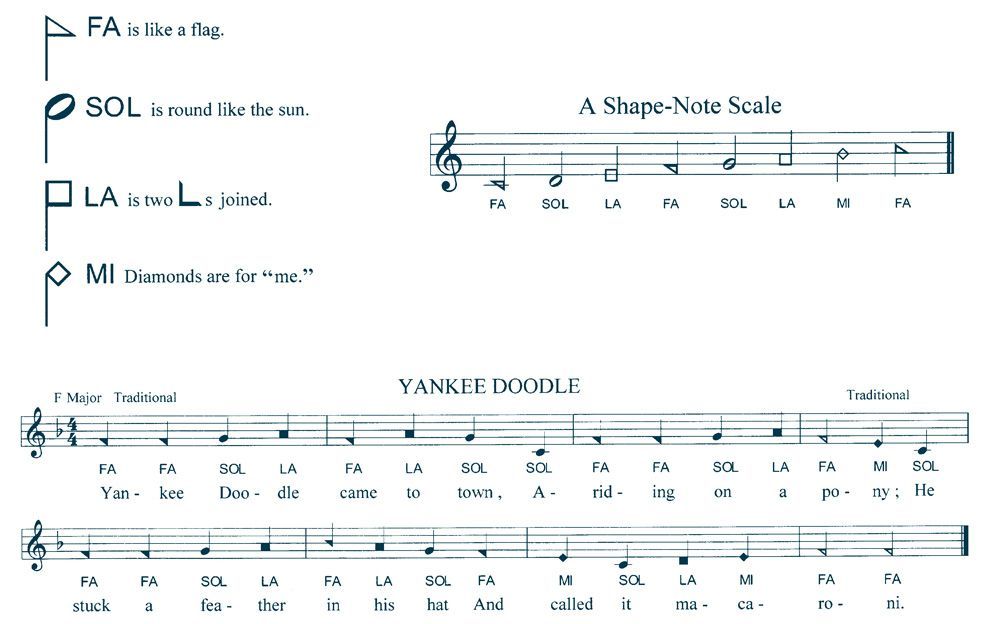
Learn More About Borrego Springs

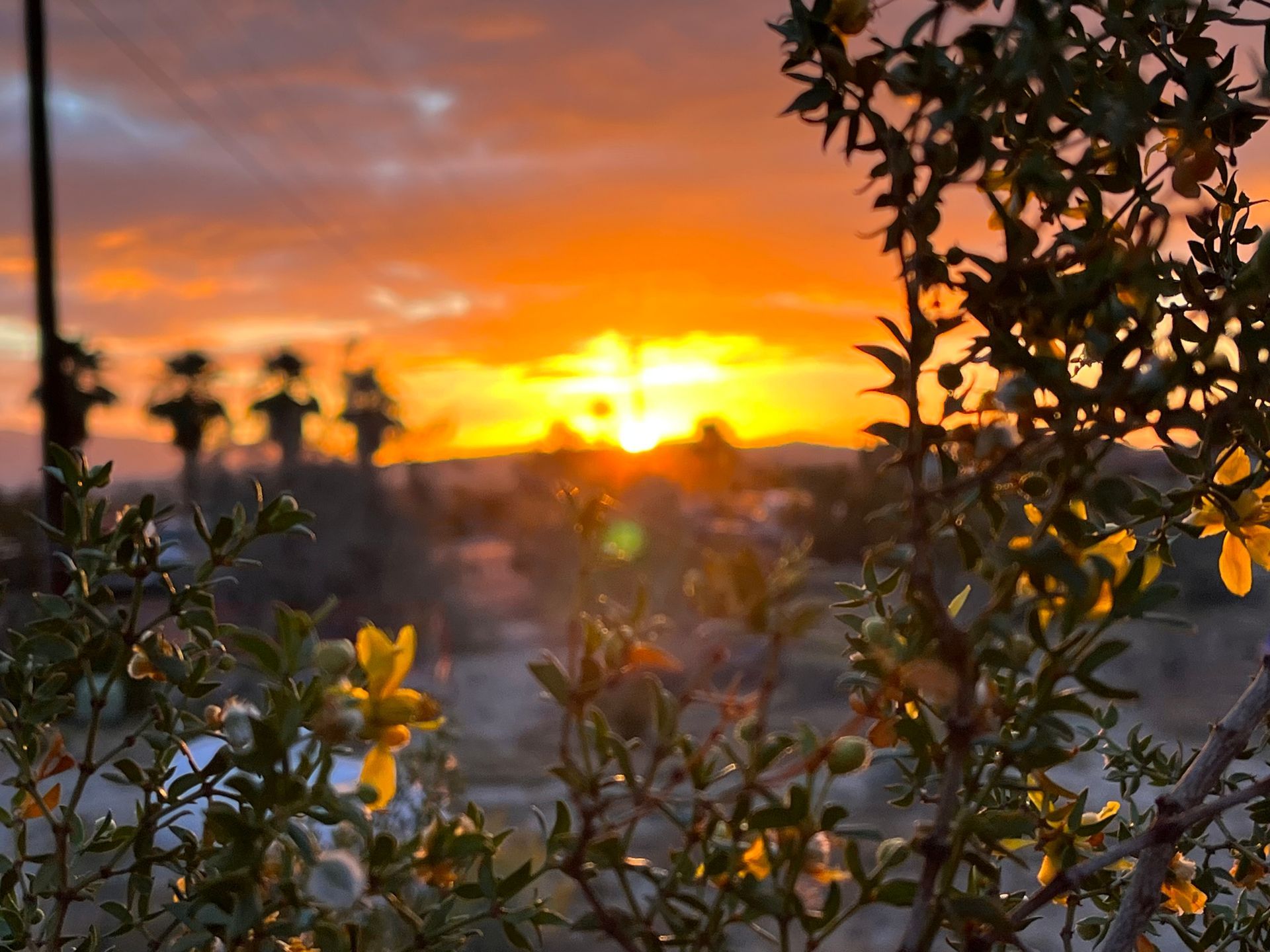
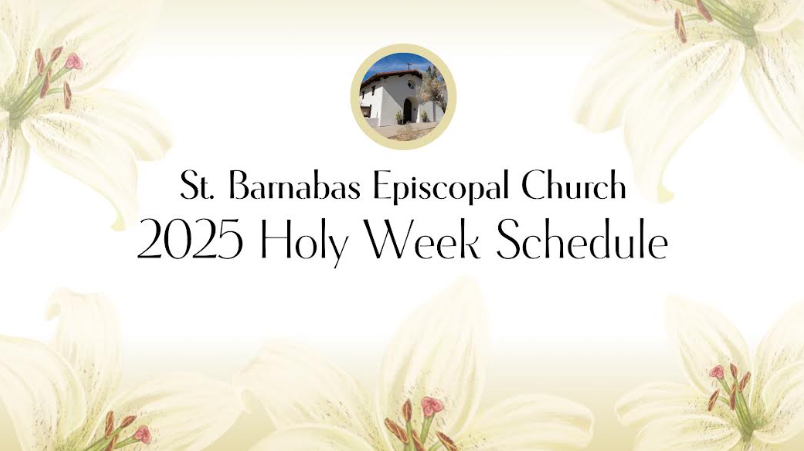
Explore Borrego Springs, the gateway to Anza-Borrego Desert State Park. Discover its stunning landscapes, vibrant community, and sustainability-focused growth.
Sign up for our newsletter!
Sign up for our newsletter!
Sign up for our newsletter!
You're All Signed Up!
Please try again later.

